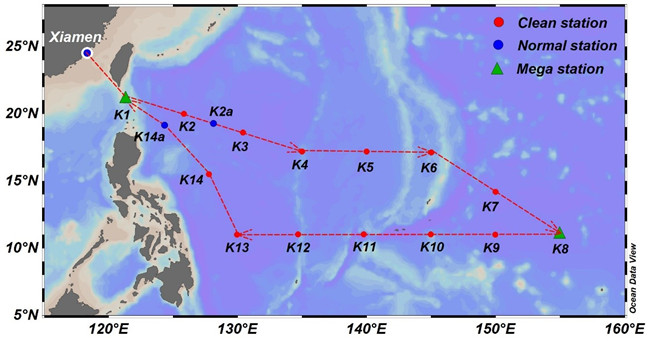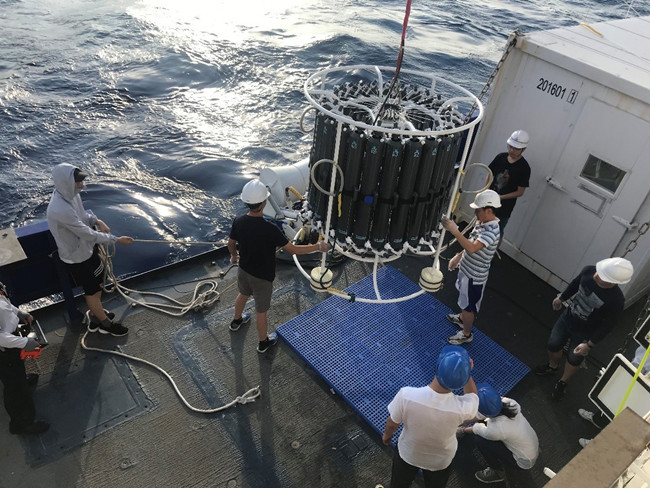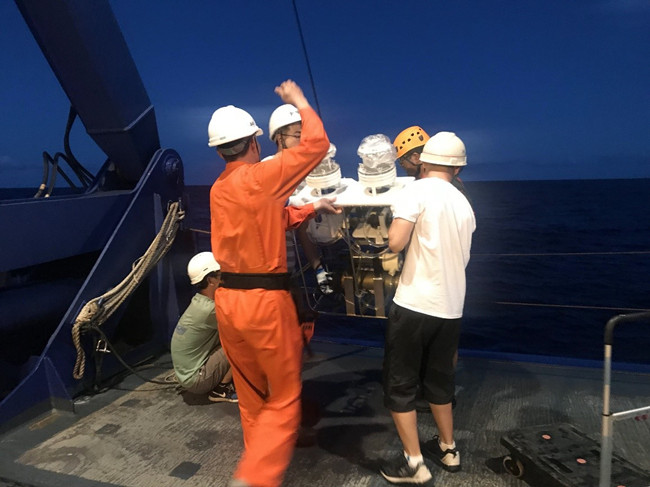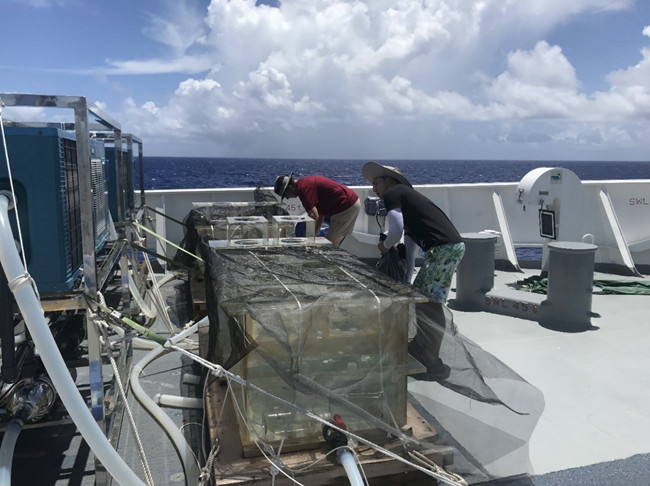At 1:00 am on June 13, 2019, the R/V Tan Kah Kee arrived at Xiamen. This means it successfully finished her first GEOTRACES cruise to the western North Pacific. GEOTRACES is an international program that was formally proposed in early 2000s to study the global marine biogeochemical cycles of trace elements and their isotopes (TEIs). For the first Chinese GEOTRACES cruise there are 36 participants from China (Xiamen University, Second Institute of Oceanography, Ocean University of China, Peking University, Shanghai Jiao Tong University), Germany (GEOMAR), Japan (Toyama University), USA (University of Maine) and Canada (University of Western Ontario). Two chief scientists, Professor Yihua Cai and Dr. Kuanbo Zhou, are both from Xiamen University.

Group photo
The western North Pacific Ocean is known for its critical role in ocean variability and global climate. However, it remains extremely under-sampled for the distribution of TEIs . This region is also considered as one of the so-called “marine deserts”, due to its lack of essential nutrient elements for life, such as Fe and N. This cruise will provide the distributions of seawater and particulate TEIs, including Fe, Cu, Ni, Al, Mn, Cd, in the full water column, as well helping further understanding the primary productivity there.

Station map
During the 45 days of the cruise, 16 stations have been investigated with multi- disciplinary, platform, and instrumental observations, including LADCP, MVP, normal and clean CTD rosettes, in-situ pumps, large volume incubation experiments, plankton trawling, and aerosol sampling. In particular, there are two 1000 class trace-metal-clean vans on board R/V Tan Kah Kee equipped for seawater and particle TEIs research.

“Clean” CTD rosette cast

In-situ pumps retrieval

Large volume incubation experiments
Compared to the GEOSECS and WOCE programs of the early 1970s and 1990s, respectively, GEOTRACES is an ongoing program, having already been conducted for more than a decade, striving to investigate the marine biogeochemical cycle of TEIs. This great work will obtain valuable TEIs data and provide key clues to the paleo-proxies used in paleoceanographic research, micronutrients elements essential for life in the ocean, and anthropogenic imprints of contaminants.
Worth noting, GEOTRACES is under the direction of SCOR (Scientific Committee for Oceanic Research), an international nongovernmental and nonprofit organization. For the development of GEOTRACES in China, Professor Minhan Dai (Xiamen University) participated in the planning of GEOTRACES. He was also the first Chinese scientist to be a member of the Scientific Steering Committee (SSC), followed by Professor Pinghe Cai (Xiamen University). In the past six years, Professor Liping Zhou (Peking University) has been a member of the SSC. These scientists have contributed much to promoting of the implementation of GEOTRACES in China. Furthermore, GEOTRACES is still on the way to fulfill its tasks. The R/V Tan Kah Kee and scientists in China plan to do more work and accelerate progresses in the future.
(Authors: Na Qian and Yihua Cai)